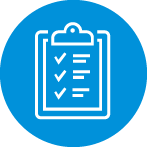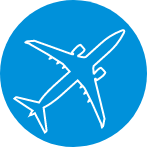737 Updates
A number of global regulators joined the U.S. Federal Aviation Administration (FAA) in lifting the orders that suspended 737 operations for airlines under their jurisdictions. We continue to work with airlines and other regulators as they take action to return the airplane to service.
View Frequently Asked QuestionsChanges to the 737 MAX
Global regulators and aviation organizations from around the world collaborated to allow the airplane to safely return to service.

MCAS
This required software function operates in unusual flight conditions only and now relies on two sensors, activates only once and never overrides pilots’ ability to control the airplane.
LEARN MORE
Additional Updates
A few items unrelated to the accidents are also being addressed. These include modifying some wiring to meet FAA requirements and installing two additional software updates.
LEARN MORE
Validation
Regulators determined the process, schedule and requirements for an effort that spanned hundreds of thousands of hours and more than a thousand test and check flights.
LEARN MORE
Pilot Training
After evaluating feedback from the global aviation community, the FAA validated our proposal for pilot training.

Boeing Proposal
We collaborated with pilots, engineers and safety experts to create a comprehensive proposal calling for current 737-8 and 737-9 pilots to complete additional training, thoroughly review technical documentation and demonstrate their knowledge in a regulator-qualified, full-motion flight simulator.

Airline Input
Pilots from more than 80 of the world’s airlines tested the enhancements firsthand in a full-motion flight simulator. They also reviewed the course material and technical documentation. Each airline will work directly with its regulator to determine their training approach and receive approval for their training course.

Regulatory Review
Beyond the regulators that have approved specific training requirements, other global regulators continue their reviews prior to setting the final protocols for their jurisdictions.
Return to Service
Whether an airplane was manufactured after the order was issued or is already in a customer’s fleet, it has to go through a rigorous process before returning to service.

Preparing Airplanes
Airplanes that have been in storage must undergo a comprehensive activation process before they can be considered ready for return to service.
LEARN MORE
Inspecting Airplanes
After each airplane is prepared, it will be thoroughly inspected against a robust set of criteria defined by regulators.
LEARN MORE
Supporting Airlines
We have been working side-by-side with our customers to ensure safe storage and now we’re ready to support them as they safely return their airplanes to commercial service.
LEARN MORE
Frequently Asked Questions
Here are answers to common questions about safely returning the 737-8 and 737-9 to service.
What is MCAS?
MCAS, or Maneuvering Characteristics Augmentation System, is a flight control law implemented on the newer models of the 737 to provide consistent airplane handling characteristics at elevated Angles of Attack in certain unusual flight conditions only. MCAS is not expected to operate in regular commercial flight conditions. With the changes we have made to the airplane, most flight crews are likely never to experience a situation that would activate MCAS.
What is the Angle Of Attack?
Angle of Attack is the angle between the direction that the nose of the airplane is pointing and the direction of the oncoming wind.
Why did Boeing install MCAS on newer models of the 737?
The Maneuvering Characteristics Augmentation System (MCAS) flight control law was designed and certified for newer models of the 737 to provide consistent handling qualities in unusual flight conditions.
When is MCAS activated?
The Maneuvering Characteristics Augmentation System (MCAS) only activates in the rare instance when all of these three conditions occur at the same time:
-
- The airplane Angle of Attack approaches a value higher than normal due to very slow speeds or aggressive maneuvering.
- The pilot is flying manually.
- The airplane flaps are up.
How did you enhance the flight control system on the newer models of the 737 to address the findings in the two accidents?
We redesigned how the airplane’s flight control computers process the information provided by the Angle of Attack (AOA) sensors. They now compare information from both AOA sensors — instead of one — before activating, adding a new layer of protection. Also, the Maneuvering Characteristics Augmentation System (MCAS) will now only activate once and will never provide more input than the pilot can counteract using the control column alone. Pilots will continue to have the ability to override MCAS at any time.
Have you made other changes to the 737 MAX?
Yes. As a result of the work done to return the airplane to service, we have made additional changes. These changes were described in detail in recent publications from regulators and include, for example:
- Enhancing the flight control computer software to provide for more cross-checking between flight control computers.
- Providing for modification of and greater separation in some wiring to satisfy regulator requirements.
What information will pilots receive about enhancements during their training?
During training, pilots will complete a suite of computer-based training modules that provide them with an enhanced understanding of the 737 flight control system, including MCAS, and related changes to airplane software. Pilots will demonstrate their knowledge by completing scenarios in a full-motion flight simulator that reinforce key procedures. Note that final training requirements for each country will be determined by its regulator.
How have you responded to internal and external reviews and audits following the two accidents?
We have taken a number of actions to further enhance the safety culture of our company. These actions include:
- Established a permanent aerospace safety committee of the company’s board of directors and reorganized the company’s engineering organization, with all engineers reporting up through Boeing’s chief engineer.
- Created a new Product & Services Safety organization, which will review all aspects of product safety and maintain oversight of our Accident Investigation team as well as our safety review boards.
- Established a formal Design Requirements Program and enhanced our Continued Operational Safety Program.
- Strengthened partnerships with airline customers and other industry stakeholders to ensure that flight deck designs and general training anticipate the needs of future pilot populations.
How many newer 737 airplanes were built?
What has to happen for the airplane to return to commercial service?
- Airlines must receive regulatory approval for their training programs.
- Pilots must complete all required training.
- Delivered Airplanes: Airlines must implement all required changes specified by the regulator on airplanes in their fleets and complete all activation tasks.
- Undelivered Airplanes: The FAA will perform in-person, individual reviews of each undelivered airplane prior to issuing an airworthiness certificate.
How are you working with regulators around the world?
We continue to engage closely with international regulators around the world, providing them with the information they need to evaluate the updates to the airplane and training.
What is MCAS?
MCAS, or Maneuvering Characteristics Augmentation System, is a flight control law implemented on the newer models of the 737 to provide consistent airplane handling characteristics at elevated Angles of Attack in certain unusual flight conditions only. MCAS is not expected to operate in regular commercial flight conditions. With the changes we have made to the airplane, most flight crews are likely never to experience a situation that would activate MCAS.
What is the Angle Of Attack?
Angle of Attack is the angle between the direction that the nose of the airplane is pointing and the direction of the oncoming wind.
Why did Boeing install MCAS on newer models of the 737?
The Maneuvering Characteristics Augmentation System (MCAS) flight control law was designed and certified for newer models of the 737 to provide consistent handling qualities in unusual flight conditions.
When is MCAS activated?
The Maneuvering Characteristics Augmentation System (MCAS) only activates in the rare instance when all of these three conditions occur at the same time:
-
- The airplane Angle of Attack approaches a value higher than normal due to very slow speeds or aggressive maneuvering.
- The pilot is flying manually.
- The airplane flaps are up.
How did you enhance the flight control system on the newer models of the 737 to address the findings in the two accidents?
We redesigned how the airplane’s flight control computers process the information provided by the Angle of Attack (AOA) sensors. They now compare information from both AOA sensors — instead of one — before activating, adding a new layer of protection. Also, the Maneuvering Characteristics Augmentation System (MCAS) will now only activate once and will never provide more input than the pilot can counteract using the control column alone. Pilots will continue to have the ability to override MCAS at any time.
How are you enhancing the flight control system on newer models of the 737?
We’ve redesigned how the airplane’s flight control computers process the information provided by the Angle of Attack (AOA) sensors. They now compare information from both AOA sensors — instead of one — before activating, adding a new layer of protection. Also, MCAS will now only activate once and will never provide more input than the pilot can counteract using the control column alone. Pilots will continue to have the ability to override MCAS at any time.
Have you made other changes to the 737 MAX?
Yes. As a result of the work done to return the airplane to service, we have made additional changes. These changes were described in detail in recent publications from the regulators and include, for example:
- Enhancing the flight control computer software to provide for more cross-checking between flight control computers.
- Providing for modification of and greater separation in some wiring to satisfy regulator requirements.
What information will pilots receive about enhancements during their training?
During training, pilots will complete a suite of computer-based training modules that provide them with an enhanced understanding of the 737 flight control system, including MCAS, and related changes to airplane software. Pilots will demonstrate their knowledge by completing scenarios in a full-motion flight simulator that reinforce key procedures. Note that final training requirements for each country will be determined by its regulator.
How have you responded to internal and external reviews and audits following the two accidents?
We have taken a number of actions to further enhance the safety culture of our company. These actions include:
- Established a permanent aerospace safety committee of the company’s board of directors and reorganized the company’s engineering organization, with all engineers reporting up through Boeing’s chief engineer.
- Created a new Product & Services Safety organization, which will review all aspects of product safety and maintain oversight of our Accident Investigation team as well as our safety review boards.
- Established a formal Design Requirements Program and enhanced our Continued Operational Safety Program.
- Strengthened partnerships with airline customers and other industry stakeholders to ensure that flight deck designs and general training anticipate the needs of future pilot populations.
How many newer 737 airplanes were built?
What has to happen for the airplane to return to commercial service?
- Airlines must receive regulatory approval for their training programs.
- Pilots must complete all required training.
- Delivered Airplanes: Airlines must implement all required changes specified by the regulator on airplanes in their fleets and complete all activation tasks.
- Undelivered Airplanes: The FAA will perform in-person, individual reviews of each undelivered airplane prior to issuing an airworthiness certificate.
How are you working with regulators around the world?
We continue to engage closely with international regulators around the world, providing them with the information they need to evaluate the updates to the airplane and training.
What information will pilots receive about enhancements during their training?
Boeing’s pilot training proposal is currently being reviewed by regulators and includes computer-based training, simulator training and additional documentation review that are designed to provide pilots with an improved understanding of flight control systems, reinforce their technical knowledge of associated flight deck effects and operational procedures, and help restore overall confidence in the airplane.